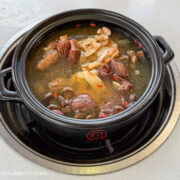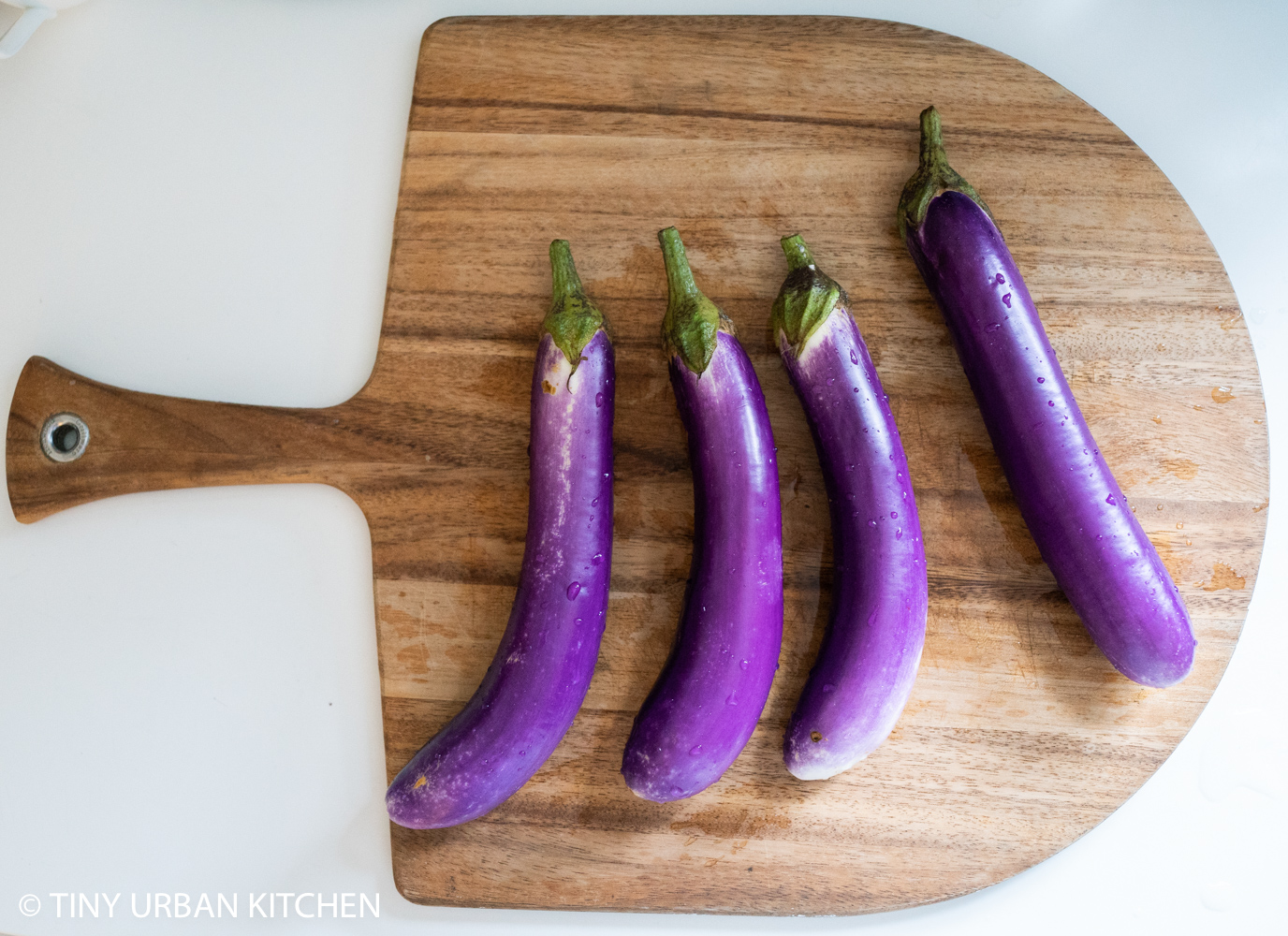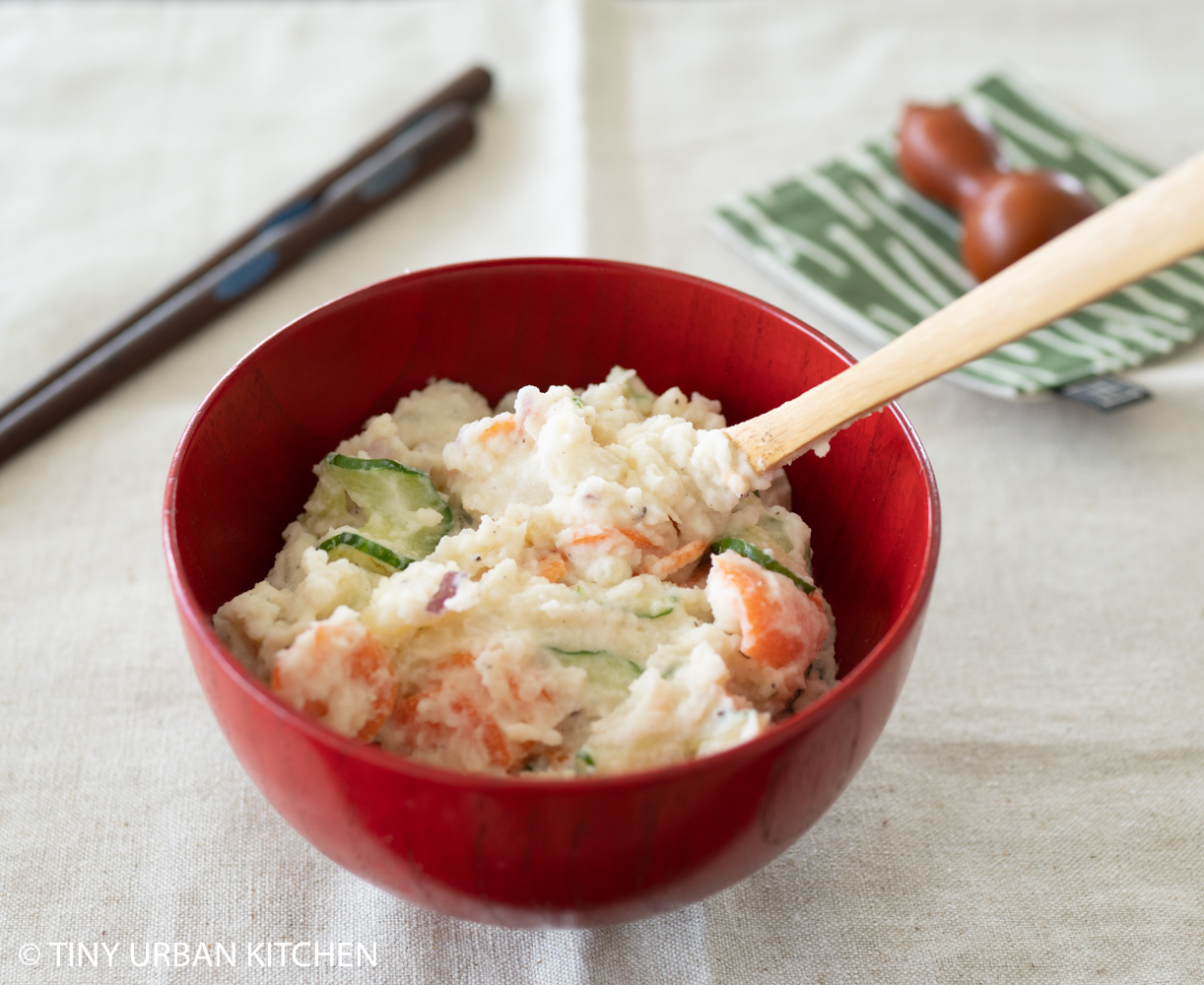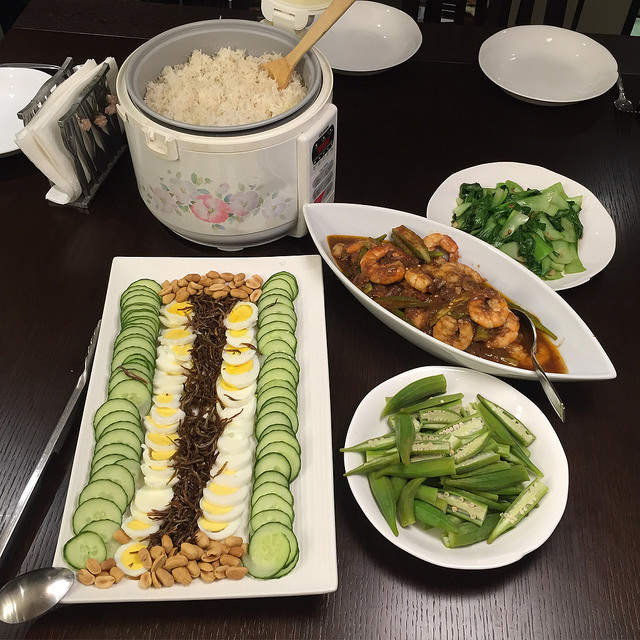I have a horrible weakness for any sort of fried "potato." Whenever I go to Garden at the Cellar, I can't help but finish a whole order of their addictive rosemary truffle fries (ahem, with Bryan's help, of course). I have an awful weakness for potato chips, home fries, tater tots . . .
I think it all started when I was young. A favorite snack of mine growing up were these pan-fried taro "chips" that my mom used to make. She would thinly slice taro into ⅛ thick discs and pan-fry them in vegetable oil until golden brown. She always made sure to put plenty of salt on both sides.
The other day, I decided to make my own version of these taro "chips". I did two versions - duck fat fried taro "home fries" and canola oil fried taro fries.
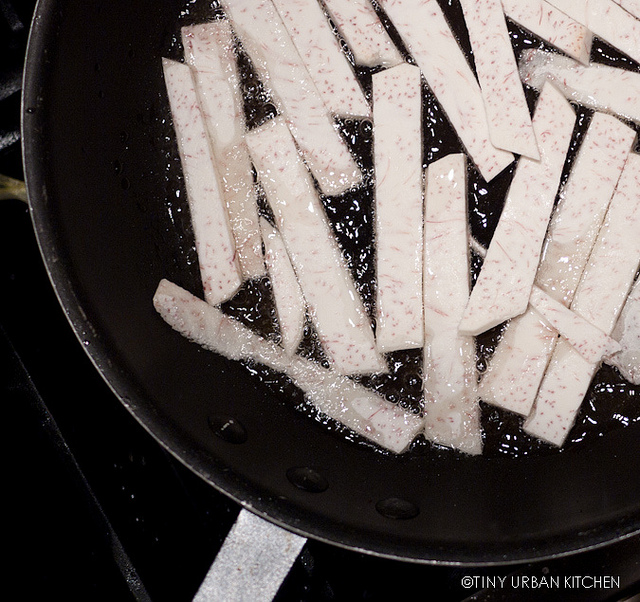
Taro is a root vegetable that is native to Southeast Asia. The plant is toxic when raw due to the presence of calcium oxalate crystals, which can irritate the mucous membrane, causing itchiness in some and more serious allergic reactions in others. Fully cooking the taro essentially remove this risk.
When frying, add enough oil to the pan so that the bottom is completely covered. Heat oil on medium high heat until hot. You can test by adding in a splash of water. If it sizzles, you know it's ready. 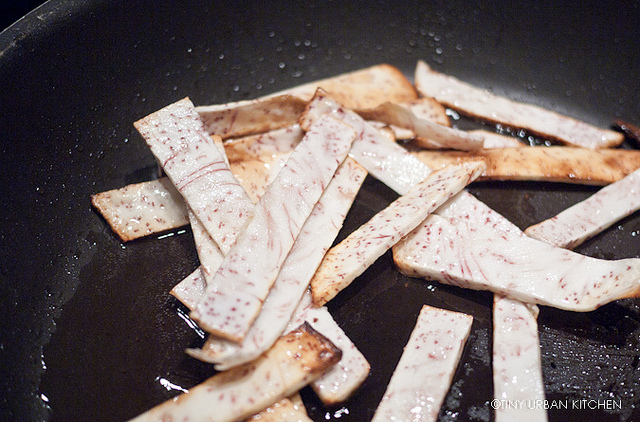
Add thinly sliced taro pieces and fry until edges begin to turn brown on one side. Flip, and then fry again until golden brown. Be careful of oil splatter! Use a splatter screen if you have one! I always do!)
There are a variety shapes you can try cutting. For example, you can cut into little squares and make taro "home fries." For these, I actually used duck fat that I had from roasting a duck. Yum!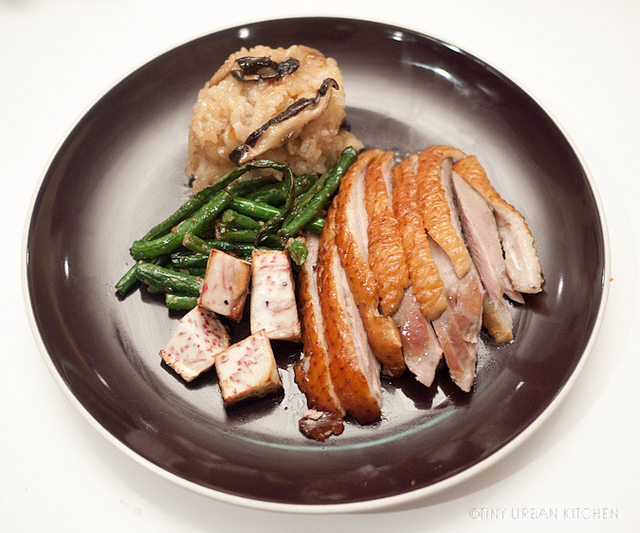
I served my "home fries" Asian Thanksgiving-style alongside some Szechuan peppercorn oven roasted duck, garlic Chinese long beans, and sticky rice!
Enjoy!
Taro Fries
1 medium sized taro root (about the size of a grapefruit pommelo)
vegetable oil (enough to cover the bottom of a pan, 5-8 T)
salt
Cut off the outer hairy exterior of the taro root, most easily done with a sharp knife. Please note, some people are allergic to the taro's exterior. Use gloves if necessary.
Slice the taro into either thin "fries" or cubes (if making home fries).
Cover the bottom of a pan with oil (either canola oil or duck fat). Heat at medium high heat until hot. You can try adding a small splash of water to the oil. If it sizzles, it's probably hot enough.
Add taro pieces to the pan, being careful to only put in one layer at a time. Do not overcrowd the pan. Heat, uncovered, until the bottom side of the taro is golden brown. Flip, and then cook the other side until golden brown. Remove, let the taro pieces drain on a paper towel. Toss with salt and serve hot.
All Rights Reserved











